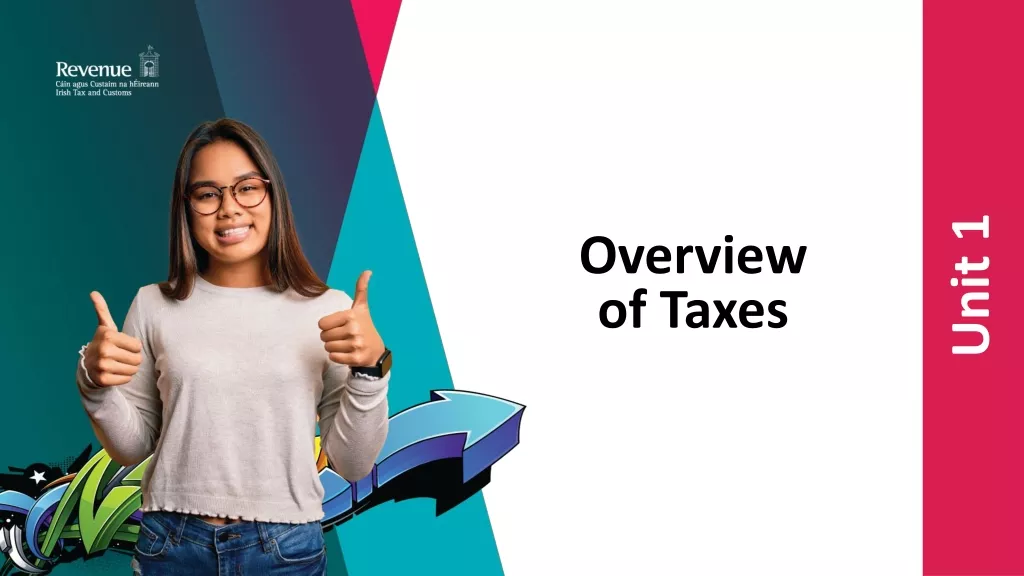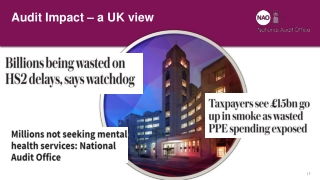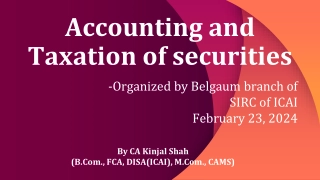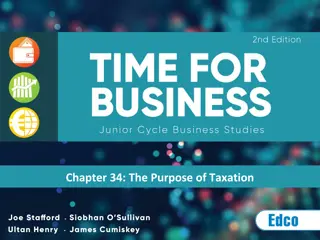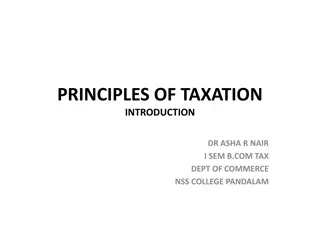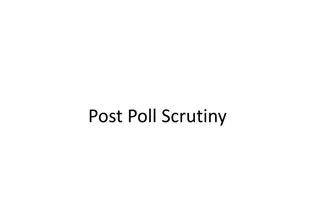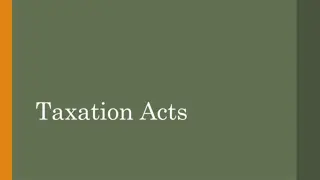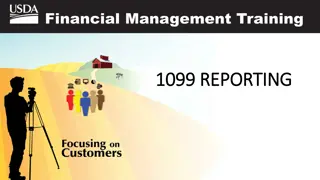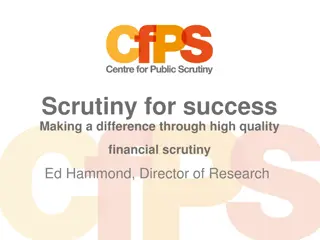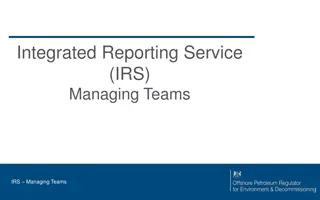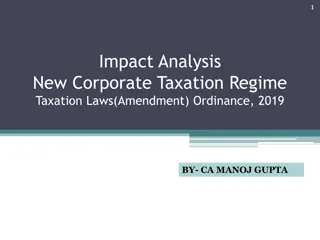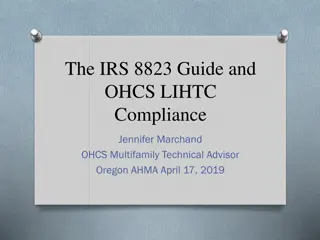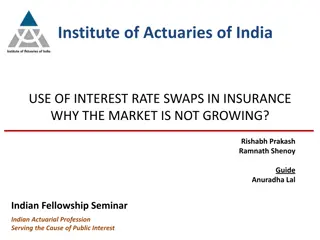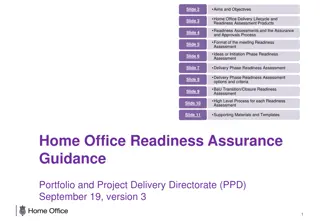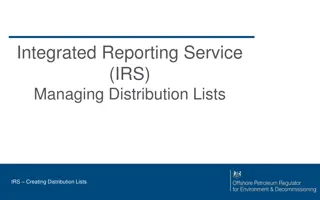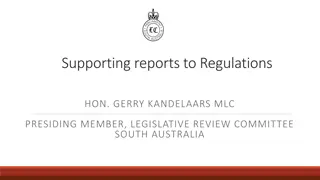Areas Requiring Deeper Scrutiny in Taxation - Saravanan B., IRS
Explore the various areas necessitating closer examination in taxation, such as adjustments in income, capital gains computation, liabilities, and more. Saravanan B., an IRS official from Chennai, highlights key points for scrutiny in financial statements and profit-loss accounts.
Download Presentation

Please find below an Image/Link to download the presentation.
The content on the website is provided AS IS for your information and personal use only. It may not be sold, licensed, or shared on other websites without obtaining consent from the author.If you encounter any issues during the download, it is possible that the publisher has removed the file from their server.
You are allowed to download the files provided on this website for personal or commercial use, subject to the condition that they are used lawfully. All files are the property of their respective owners.
The content on the website is provided AS IS for your information and personal use only. It may not be sold, licensed, or shared on other websites without obtaining consent from the author.
E N D
Presentation Transcript
Identification of cases for scrutiny Saravanan B, IRS DTRTI, Chennai
AREAS REQUIRING DEEPER SCRUTINY Adjustments in the Memo of Income Deductions under Chapter VIA Deduction u/s 10A/10B Huge exempt income Sale of Agricultural land Income Chargeable at lower rates
AREAS REQUIRING DEEPER SCRUTINY Computation of Capital gains Exemption from capital gains Mismatch in receipts as per TDS certificates and income admitted Huge liabilities Introduction of Capital
AREAS REQUIRING DEEPER SCRUTINY Stagnant Creditors/loans Very low net profit Claim of extraordinary losses Huge Depreciation Addition of Fixed assets
AREAS REQUIRING DEEPER SCRUTINY Claim of Land development expenses, etc. Dividend stripping, Bonus stripping Loss under one head set off against income from another head Transactions with sister concerns Loans to Shareholders
AREAS REQUIRING DEEPER SCRUTINY CASS cases based on Cash transactions, Investments, Immovable property transactions Individual s assessment Bank statements, Receipts and Payments account, Statement of affairs
Examination of Financial Statements
Examination of Profit & Loss account Whether any cap. exp. is debited as revenue Whether any personal exp. is debited in the guise of business exp. Whether any exp. of prior period or subsequent acctg. period is debited Whether any exp. prohibited in the Act like exp. On illegal activities, payment to NRI without TDS etc Where any exp. Is allowable only on meeting conditions, whether such conditions are met eg, 43B, Depn.
Examination of Balance Sheet Fixed Assets Quantification of fixed assets is to be in accordance with sec.43(1) of the IT Act Pre commencement interest on borrowed capital has to be capitalized SC decision in Challapalli sugars In case of asset financed by FOREX loan, increase in liability due to foreign exchange fluctuation, has to be included in the actual cost as capital expenditure (ARVIND MILLS SC) In case of subsidy received from Govt. ,the same has to be reduced from the actual cost of capital asset. To examine whether addition to fixed assets are in the nature of current repairs , which is not eligible for depreciation u/s 32 .
Examination of Balance Sheet.. INVESTMENT Profit on sale of shares etc., would be C.G. if the seller is an ordinary investor. The same would be revenue receipts if he carries on business in shares etc., It should be verified that income from various investments are properly accounted for.
Examination of Balance Sheet.. Shares issued for consideration other than cash-to be carefully examined In the first AY, list of share capital subscribers to be obtained for enquiries. If introduction of nominees is suspected, AO to study application made by such persons and the manner of payment In public companies ,info on large sums paid as application money can be passed on to AO concerned for investigation in r/o subscribers
Examination of Balance Sheet.. LOANS Sec 43B Interest on borrowed funds diverted for non- business purposes Sec 269 SS & 269 T Capitalization of interests for pre- commencement period Application of provisions of sec. 2(22)(e)
Account books Cash Book Bank book Journal Ledger
Journal (i) Purchase journal (ii) Sales journal (iii) Returns outward journal (iv) Returns inward journal (v) Bills receivable journal (vi) Bills payable journal (vii) Main Journal
What to examine in a Cash Book ? Cash Credits Entries towards the end of the Cash Book Un ledgerised entries Daily balancing of Cash Book Opening entries Cash credits and bogus sales Ante-dating receipts in cash book 40A(3) payments
Cash credits When business needs funds, assessees introduce secret cash into business by debiting cash book and When the needs are over and surplus funds are available, cash introduced is withdrawn (Example: The recent case of search in a builders premises) Sometimes, the cash is allowed to remain in the business Cash credits appearing in the names of assessees, his relatives, employees or persons connected with the assessee should be taken up for scrutiny.
Cash credits Cash credits alleged to have come out of agricultural income Cash credits alleged to have come out of foreign gifts Cash Credits alleged to have come out of previous withdrawals Cash Credits in the name of a third party Cash Credits in the name of assessee s wife or in the name of coparcener of an H.U.F Credits appearing as share application money
Entries at the end of cash book A no. of adjustment and closing entries may be made to close bogus accounts and accounts which may bring concealed income to light. The idea is to ensure that these accounts are not shown in the balance sheet , in order to avoid detection.
Unledgerised entries Cash book entries which have not been ledgerised need to be closely scrutinised. In order to make B/S agree, corresponding withdrawals are found in the cash book itself. Sometimes the amount is not withdrawn from business before the close of acctg. Year. In such cases, the B/S is invariably manipulated to tally the total of assets and liabilities. Unledgerised cash debits either in the names of the assessee s employees, or branches or regular customers, suppliers etc. need to be thoroughly investigated.
Daily balancing of cash book Cash book is to be normally balanced every day. In some cases, the cash book is balanced not daily, but periodically, say weekly, fortnightly, monthly etc. In such cases, the position of daily cash balance should be analysed to detect if enough cash balance was available for the cash disbursements.
Opening entries Large cash introduced in the cash book on or about the opening day of the accounting period Opening cash balance at the beginning of the acctg. period to be tallied with closing balance of the previous period. Towards the beginning of each month, substantial cash required to meet monthly commitments like rent, salary etc. whether the cash balance is artificially inflated to take care of the expenses. In a newly set-up business, the capital introduced need to be examined
Cash credit and bogus sales Cash may be introduced as bogus cash sales. Such bogus sale may not be taken to trading account, in which case, the same can be detected by referring to the trading account. Alternatively, such sales are taken to the trading account, but a wrong total of gross sales is made in the ledger ignoring such bogus sales. In the latter case, it is necessary to check the total of sales reflected in the trading account. Non-availability of quantitative records of stock provides easy opportunity to introduce secret cash as open market sales. This can be detected by an exercise of arithmetical stock tally of purchases and sales on particular days
Ante dating of receipts Cash balance may be inflated by ante dating cash receipts . This can be detected by cross verification with subsidiary records like bills, cash memos etc.
40A(3) payments While going through the payments side of the cash book, we may look for payments in excess of Rs.20,000/- towards expenditure and examine whether the same have been disallowed u/s 40A(3) in the computation sheet.
Points to look for in journals Contra entries narration should be carefully read as significant clues may be available at the end of a journal Entries without date this leaves a chance to antedate transactions with ulterior motive.
Points to look for in journals Entries meant for white washing the B/S Transfer of inconvenient accounts by passing journal entries. Accounts of depositors, current accounts of secret branches etc. relating to concealed business activities may be removed from the B/S by passing a journal entry to some other account of a creditor / debtor just before the end of the year Such entries will be reversed immediately after commencement of the next accounting year.
How to examine a ledger? Ledger should be gone through to locate squared-up or closed accounts, as the assessee may have introduced suppressed profits in these accounts in the name of third parties and may have withdrawn the same. Accounts in the name of the assessee, his close relatives,family members and trusted employees etc. should be seen. Dates of payments and credits to personal accounts Important from the point of 40(a)(ia) (Example : A case in which freight payments were shown to have been made on the last day of the year)
How to examine a ledger.? Accounts of persons without address or with unfamiliar / distant addresses should be carefully seen. Single transaction accounts should be carefully seen as they may mean bogus/inflated purchases or deflated sales and subsequent withdrawal of concealed income. The Accounts kept for transactions with the Govt. Dept.s should also be examined, as some assessees incorporate some other transactions in these accounts, in the hope that the dept. would not check these accounts.


